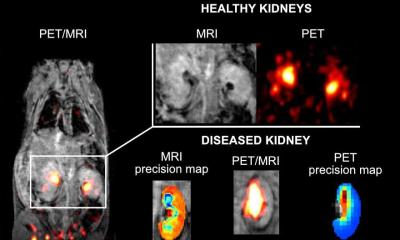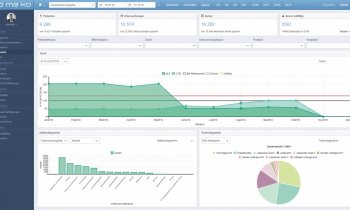Contrast agents
At this year’s ECR, new developments will be outlined during the Contrast agents: Experimental and Clinical session. Mark Nicholls spoke with the session moderator Professor Peter Aspelin, Professor in Diagnostic Radiology at the Karolinska Institute, Stockholm, about their potential.

Ultrasmall Superparamagnetic Iron Oxide (USIO) contrast agents, designed to help improve the assessment of cancer spread to the lymph nodes, will form a key part of a focused ECR session; although still at the experimental stage, Professor Aspelin pointed out that USIOs have been used to some effect on patients already. ‘They are fairly well developed and another polymer contrast agent, mainly used in the vascular bed, can also be used for visualisation of the vessels that cancer produces to ensure a blood and oxygen supply. If we can see these vessels, and see that they are being reduced in number, we know that the cancer treatment is working. To have a contrast agent that stays within the blood vessels longer than normal contrast agents do helps us to see that the cancer is retracting and responding to treatment.’
Radiologists are also exploring how to further develop ultrasound contrast agents and the possibilities of using this in liver disease and monitor the effects of chemotherapy.
“You can use ultrasound contrast media to see how the vessels are changing and how the tumours are changing. The perfusion index can be an early marker of treatment,’ the professor explained.
There will also be a discussion on safety issues and how steps can be taken to avoid Nephrogenic Systemic Fibrosis (NSF). A key approach to this is to ensure the patient does not suffer from renal insufficiency; a clinical paper will demonstrate a new shortened questionnaire to help radiologists establish this.
Another study will indicate how macrocyclic agents seem better than linear agents from the NSF safety perspective. At this stage, most of the studies have been conducted on safety and image quality rather than a cost-effectiveness basis. ‘We are working more on increased information than reduction of dose or cost,’ said Prof. Aspelin. ‘Safety studies show mainly that you should use the questionnaire in order to avoid patients with decreased renal function and also that it seems likely that macrocyclic MR contrast media are better than the linear.’
The new contrast agents could also be safer when used to monitor cancer treatment and illustrate the difference in angiogenic tumours and the metastatic spread, he added.
The wider issue of safety and contrast agents will also be explored in more detail at a separate ECR session to be chaired by Guy Frija, Professor of Radiology and Chairman of the Department of Radiology at Georges Pompidou European Hospital in Paris and Secretary General of the French Society of Radiology.
Professor Aspelin suggested it will be two years or more before most of these new contrast agents are ready for use in patients – apart from Ultrasmall Superparamagnetic Iron Oxide contrast agents - with most so far tested only in animal models.
The professor added that this ECR session will alert radiologists and researchers to future developments. ‘For the radiologist, it is valuable to know what is happening in the future because contrast agents are still the only pharmaceutical agents we give and there are adverse events and complications that radiologists do have to know about.’
02.03.2010











